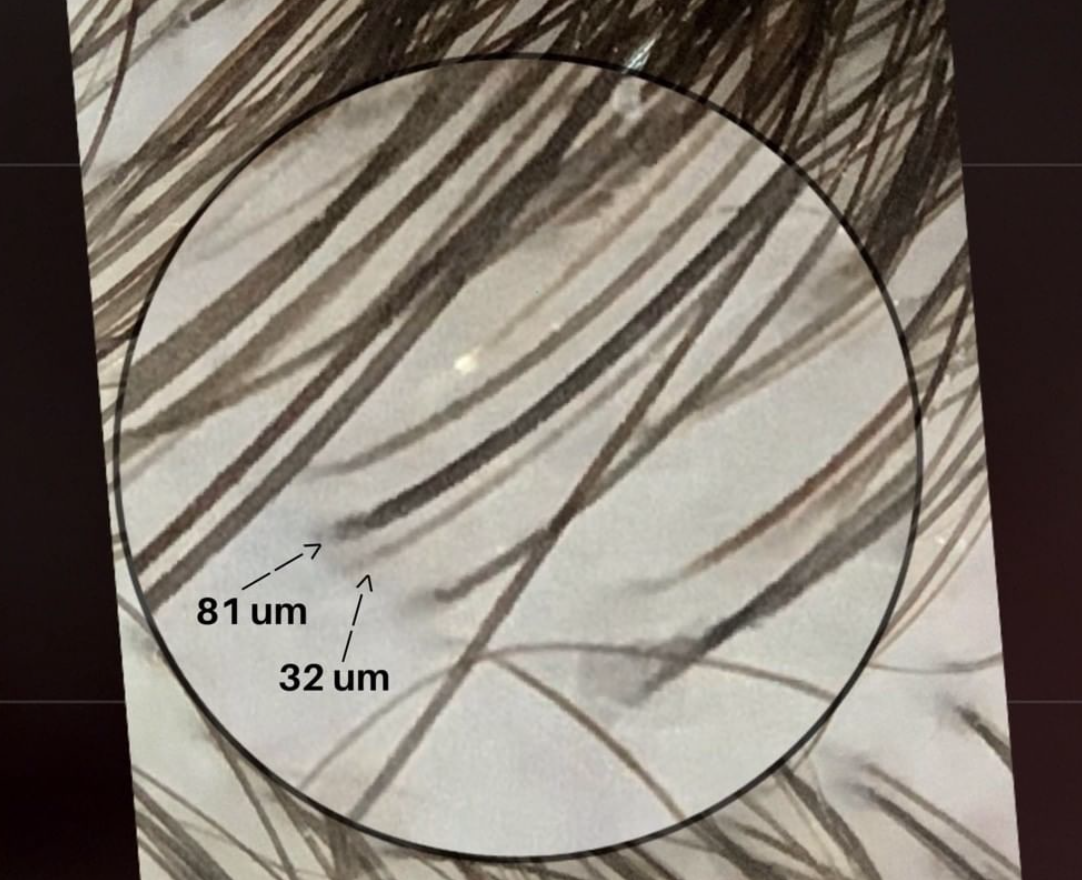Anisotrichosis in Androgenetic Alopecia
What is anisotrichosis?
Androgenetic alopecia affects both men and women. There are several features of this condition including increased shedding, hair that does not grow as long as before and a slow and steady reductions in the caliber (diameter) of follicles. The other feature of androgenetic alopecia is that it usually affects some areas of the scalp more than other areas and is therefore said to be a “patterned” type of hair loss.
In 2007, Sewell introduced the term “anisotrichosis” which refers to a variation in diameter of follicles. It’s an important trichoscopic feature of established androgenetic alopecia.
In this picture of a female patient with androgenetic hair loss, it can be seen that some hairs are thick and some are much thinner. Two hairs in the photograph are labelled - one being 81 micrometers in diameter and the one right next to it being 32 micrometers in diameter. At one point in the patient’s life, most hairs in the region would have been similar caliber. The process of genetic hair loss has caused some to thin more rapidly than others.
The decrease in caliber is due in part to a decease in the size of the dermal papilla (a part of the hair follicle). Treatments for androgenetic alopecia include topical and oral minoxidil, topical and oral antiandrogens, low level laser, platelet rich plasma and hair transplantation. Scalp micropigmentation provides a method of camouflage for some patients.
Bhamla and collages showed in 2013 that anistrochosis was 75 % sensitive and 61 % specific in the diagnosis of androgenetic alopecia. This means that if one does not see anisotrichosis when evaluating the scalp by trichoscopy, the patient just might not have androgenetic alopecia. However, if anisotrichosis is seen one needs to strongly consider AGA but diagnoses like alopecia areata, traction alopecia (which also cause miniaturization) must also be considered too.
Galliker and Trueb in 2012 proposed that if we see more than 20 % of hairs being of different caliber, then one should strongly consider the diagnosis of androgenetic alopecia.
Reference
Sewell L et al Anisotrichosis: A novel term to describe pattern alopecia. J Am Acad Dermatol 2007; 56: 856.
Bhamla SA et al. Is trichoscopy a reliable tool to diagnose early female pattern hair loss? Int J Trichology. 2013 Jul;5(3):121-5.
Galliker NA, Trüeb RM. Value of trichoscopy versus trichogram for diagnosis of female androgenetic alopecia. Int J Trichology. 2012 Jan;4(1):19-22.
This article was written by Dr. Jeff Donovan, a Canadian and US board certified dermatologist specializing exclusively in hair loss.

